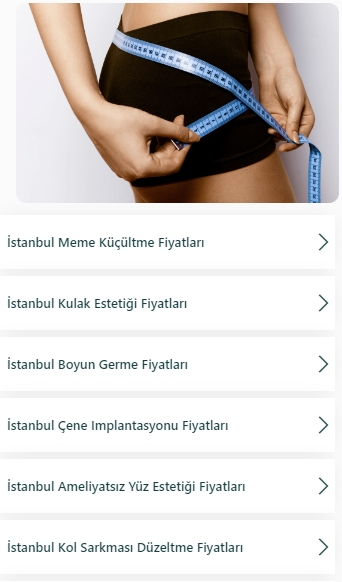
Hijama Therapy: A Traditional Treatment Method
- Hijama Therapy: A Traditional Treatment Method
- History of Hijama Therapy
- How is Hijama Therapy Performed?
- What are the "Golden Days" of Hijama Therapy?
- Benefits and Effects of Hijama Therapy
- Risks and Precautions of Hijama Therapy
- Conclusion
Hijama therapy, also known as cupping therapy, is a traditional treatment method that has been used for thousands of years. It is practiced to regulate blood circulation, expel toxins from the body, and treat various health issues. Originating from ancient times, hijama is known by different names in various cultures and is utilized for a range of purposes.
History of Hijama Therapy
The history of hijama therapy dates back to ancient times. This treatment method has been practiced in many cultures for various purposes and has evolved over time. Here are some ancient cultures where hijama therapy was practiced:
- China: The roots of hijama therapy extend to ancient Chinese medicine. About 3000 years ago, a method called "cupping therapy" emerged in China to treat ailments like dizziness and migraines. In this method, glass or bamboo cups are used on the skin surface to stimulate blood flow and balance the body's energy flow.
- Egypt: Hijama therapy was also practiced in ancient Egypt. The Egyptians used cupping therapy to prevent blood stagnation and treat health issues. Archaeological excavations in Egypt have uncovered evidence of such treatments.
- Greece: It is known that hijama was used in ancient Greek medicine. The famous physician Hippocrates recommended hijama for his patients, advocating its benefits in blood purification and balancing the body.
- Islamic Medicine: In Islamic medicine, hijama is recommended by the Prophet Muhammad (peace be upon him). In the Islamic world, hijama became an important method for treating various health problems. It is believed to purify the blood, expel harmful substances from the body, and cure various illnesses.
Today, hijama therapy continues to be practiced in many countries as part of traditional medicine.
How is Hijama Therapy Performed?
Hijama therapy involves making small incisions at specific points on the body and then using a vacuum method to draw blood. Here is a general outline of how hijama therapy is performed:
- Preparation: The person undergoing hijama therapy is prepared in a suitable environment and placed in a comfortable position. The treatment area is usually one where blood circulation is intense, such as the back, shoulders, neck, or legs.
- Disinfection: The area to be treated with hijama is cleaned and disinfected with a sterile antiseptic. This step is crucial to reduce the risk of infection.
- Small Incisions: Using a thin, sharp blade or scalpel designed for hijama, small incisions are made on the skin. These incisions are typically superficial and small.
- Vacuum Application: A special tool called a hijama cup is placed over the incised area. The air inside the hijama cup is drawn out using a vacuum pump or suction, causing blood to be drawn out from under the skin. This accelerates blood circulation and helps expel toxins from the body.
- Blood Suction and Cleaning: As the vacuum is applied, blood is drawn into the hijama cup. Once the cup is filled or the procedure is complete, the cup is removed from the skin. The incisions are gently pressed to ensure blood is fully drawn out, and then cleaned with sterile gauze or cotton.
- Aftercare: The treated area may be covered with a sterile bandage or gauze. Post-treatment, the person is advised to rest and drink plenty of water. The incisions should be regularly cleaned and protected with antiseptic ointments to aid healing.
Hijama therapy should be performed by an experienced healthcare professional, preferably a medical doctor, to ensure hygiene and sterilization and to manage any complications or side effects.

What are the "Golden Days" of Hijama Therapy?
The term "Golden Days of Hijama Therapy" refers to the most suitable and effective days for this treatment. Some traditional beliefs or practitioners suggest that certain days are more favorable for the therapy.
Benefits and Effects of Hijama Therapy
Hijama is believed to have many benefits, including improving blood circulation, detoxifying the body, boosting the immune system, alleviating pain, reducing stress, and promoting a general sense of well-being. It is also used in treating specific ailments such as migraines, back pain, and rheumatism by alleviating symptoms of chronic conditions.
Risks and Precautions of Hijama Therapy
Like any medical procedure, hijama therapy carries certain risks, including infection, bleeding, and skin irritation. Therefore, consulting a healthcare professional before undergoing hijama is crucial. Paying attention to hygiene and sterilization ensures the safe application of hijama therapy.
Conclusion
Hijama therapy is an effective traditional treatment method used for thousands of years. When properly applied, it is believed to benefit various health issues. However, like any treatment, hijama has its risks and contraindications. Therefore, it is important for individuals considering hijama therapy to consult a healthcare professional first.
Stay healthy...

Dr. Hülya Ettekin





